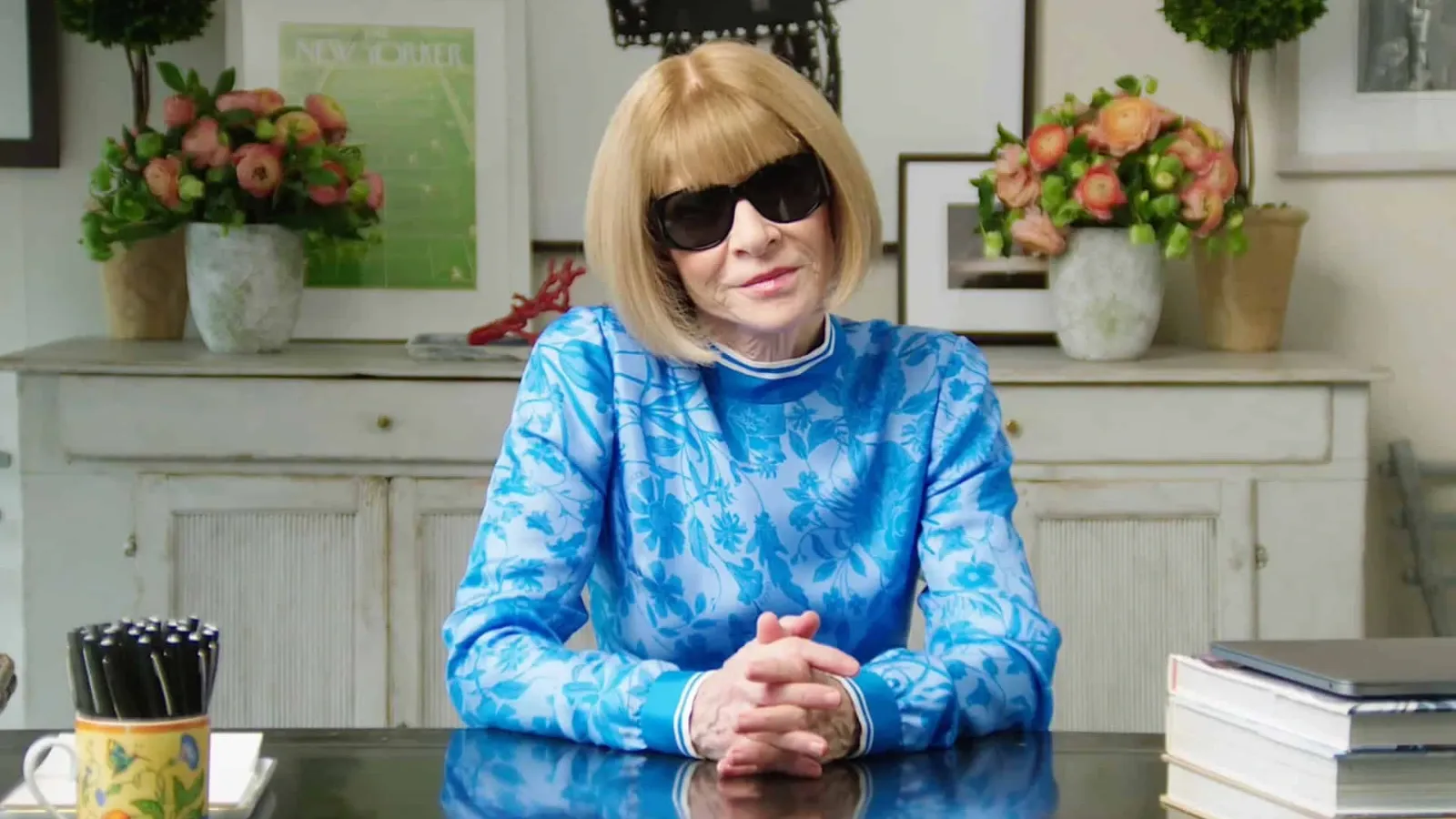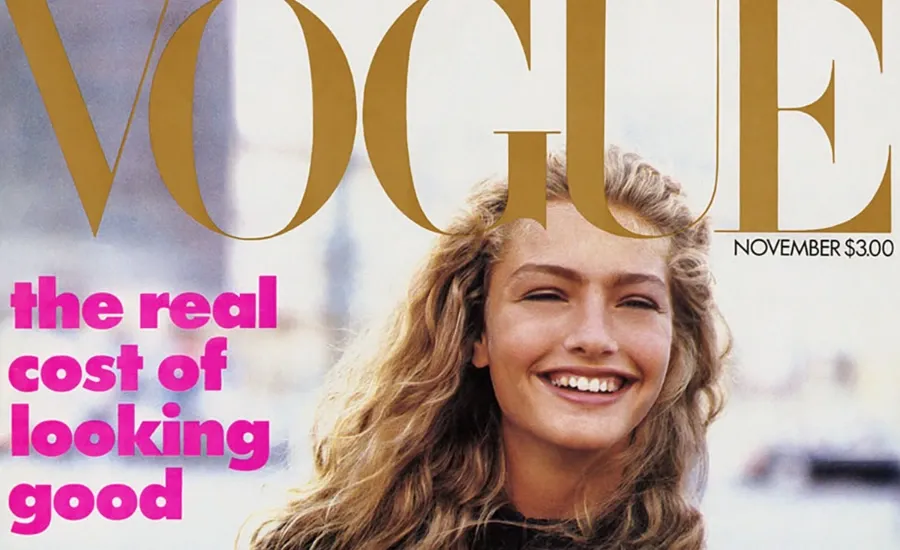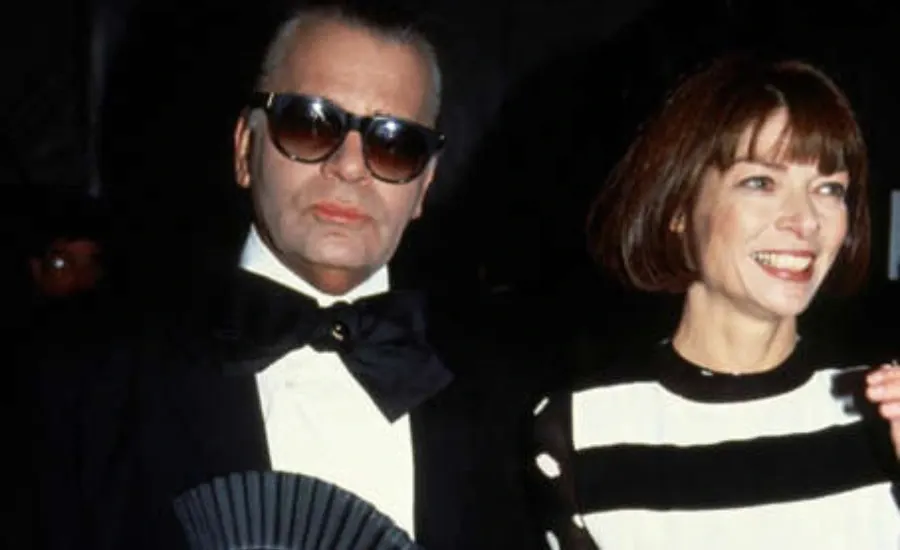
The Woman Behind the Bangs: How Anna Wintour Revolutionized Fashion and Inspired a Generation
When Meryl Streep's Miranda Priestly delivered that iconic cerulean monologue in The Devil Wears Prada, she wasn't just playing a character—she was channeling the essence of Anna Wintour, the woman who has been the undisputed queen of fashion for over three decades. And while we've previously explored the fictional fashion maven Miranda Priestly and her cultural impact, today we're talking about the real woman who inspired her: Anna Wintour, whose influence on fashion, media, and working women everywhere cannot be overstated.
As Wintour's departure from Vogue after 35 transformative years is official, since she has already chosen Chloe Malle as her successor at Vogue, there's never been a better time to reflect on how this British-born powerhouse didn't just shape fashion—she revolutionized an entire industry and redefined what it means to be a working woman at the top of her game.
The Making of a Fashion Icon
Anna Wintour's journey to the pinnacle of fashion didn't happen overnight. Born in London in 1949 to a newspaper editor father and a philanthropist mother, Wintour was exposed to the power of media and social influence from an early age. But it was her move to New York in the 1970s that would change everything—not just for her, but for the fashion world as we know it.
Starting as a fashion assistant at Harper's Bazaar, Wintour quickly learned that in fashion, as in life, you need to make bold choices. Her early career was marked by a series of strategic moves that would later become her signature approach: taking calculated risks, backing emerging talent, and never settling for mediocrity.
What sets Wintour apart from other editors isn't just her keen eye for fashion—it's her understanding that fashion is intrinsically linked to culture, politics, and society. This holistic view would later transform Vogue from a fashion magazine into a cultural institution.
Transforming Vogue: More Than Just Pretty Pictures
When Anna Wintour took the helm at American Vogue in 1988, the magazine industry was vastly different. Fashion magazines were often seen as frivolous, focusing solely on unattainable luxury. Wintour changed all that, creating a publication that spoke to real women living real lives—women who wanted to look good while conquering boardrooms, raising families, and changing the world.
Her first cover, featuring an Israeli model Michaela Bercu in a Christian Lacroix jacket paired with jeans, sent shockwaves through the fashion establishment. It was high fashion meets street style, luxury meets accessibility—a formula that would become Wintour's trademark and transform fashion publishing forever.

The Democratization of Fashion
One of Wintour's most significant contributions has been making high fashion accessible and relevant to everyday women. Under her leadership, Vogue began featuring affordable pieces alongside couture, showing readers how to incorporate runway trends into their real-world wardrobes. This wasn't just about clothes—it was about empowerment.
For working women especially, this approach was revolutionary. Suddenly, fashion wasn't just for the wealthy elite; it was for the ambitious assistant, the busy executive, the entrepreneur building her empire. Wintour understood that how we dress affects how we feel and how others perceive us—a lesson every working woman knows instinctively.
Celebrity Culture and the Birth of the Fashion-Entertainment Complex
Wintour also recognized early on that celebrity and fashion were becoming inextricably linked. She was among the first editors to put celebrities rather than models on magazine covers regularly, understanding that readers wanted to see how their favorite stars styled themselves. This move helped birth the modern celebrity fashion culture we know today.
More importantly, she used her platform to elevate emerging designers by connecting them with A-list celebrities. The result? Some of fashion's biggest names—from Marc Jacobs to Alexander Wang—owe part of their success to Wintour's early support and strategic celebrity placements.
The Business of Influence: Wintour's Corporate Acumen
While many focus on Wintour's editorial vision, her business acumen is equally impressive. As Condé Nast's Artistic Director and Global Content Advisor, she's expanded her influence far beyond Vogue's pages. She's essentially become a one-woman brand consultancy for the fashion industry.
The Met Gala: Fashion's Biggest Night

Perhaps no single event exemplifies Wintour's influence like the Met Gala. Since taking over the event's organization in 1995, she's transformed it from a modest fundraiser into fashion's equivalent of the Oscars. The Met Gala isn't just about raising money for the Metropolitan Museum's Costume Institute—it's about setting the fashion agenda for the entire year.
The event generates millions in publicity for designers, launches trends that trickle down to mass market retailers, and creates cultural moments that resonate far beyond fashion circles. It's business strategy disguised as a party, and it's pure Wintour genius.
Nurturing Emerging Talent
Throughout her career, Wintour has been a champion of emerging designers, using her platform to spotlight new talent that might otherwise go unnoticed. The CFDA/Vogue Fashion Fund, which she helped establish, has provided crucial financial support to up-and-coming American designers.
This commitment to nurturing talent reflects a key leadership lesson: great leaders don't just achieve success for themselves—they create pathways for others to succeed too.
The Miranda Priestly Connection: Fiction Meets Reality
The parallels between Anna Wintour and Miranda Priestly are undeniable, and Lauren Weisberger's novel (later adapted into the beloved film) captured something essential about working in fashion media. Both characters—real and fictional—embody the complex reality of being a woman in power.
Like Miranda, Wintour is known for her exacting standards, her ability to make or break careers with a single decision, and yes, her intimidating presence. But where the fictional Miranda was portrayed as purely ruthless, the real Anna Wintour is more complex. She's demanding because she understands that excellence requires high standards. She's decisive because the fashion industry moves at lightning speed. She's protective of her vision because she's seen what happens when that vision gets diluted.
The comparison also highlights an important truth about successful women in leadership: they're often labeled as "difficult" or "demanding" when men with similar leadership styles would be called "decisive" or "uncompromising." Wintour has navigated this double standard for decades, never apologizing for her high expectations or softening her approach to seem more palatable.
Leadership Lessons from the Queen of Fashion
Anna Wintour's career offers valuable lessons for any working woman looking to make her mark:
Trust Your Vision: Wintour has never wavered from her editorial vision, even when it was unpopular or misunderstood. She understood early on that trying to please everyone results in pleasing no one.
Take Calculated Risks: From putting celebrities on covers to mixing high and low fashion, Wintour's biggest successes came from taking risks others weren't willing to take.
Build Strategic Relationships: Her network spans fashion, entertainment, politics, and business. She understands that success is rarely a solo endeavor.
Adapt Without Losing Your Core: While Wintour has evolved with the times—embracing digital media, social platforms, and changing consumer behaviors—she's never lost sight of what made her successful in the first place.
Use Your Platform Responsibly: Wintour has increasingly used her influence to promote diversity, sustainability, and social causes, understanding that with great power comes great responsibility.
The Digital Revolution: Staying Relevant in a Changing World
Perhaps most impressively, Wintour has successfully navigated the digital revolution that has disrupted traditional media. While many legacy publications have struggled to maintain relevance, Vogue has thrived online, on social media, and through innovative digital content.
Under her guidance, Vogue has embraced everything from YouTube series to TikTok trends, proving that relevance isn't about abandoning your core values—it's about finding new ways to express them.
This adaptability is a crucial lesson for all working women: the ability to evolve while staying true to your fundamental principles is what separates long-term success from fleeting achievement.
The Departure Rumors: End of an Era?
Recent speculation about Wintour's potential departure from Vogue has sent ripples through the fashion world. After 35 years of leadership, the idea of Vogue without Anna Wintour is almost unimaginable. Yet, if and when she does step down, her legacy will be secure.
She's created a template for fashion leadership that combines editorial excellence with business acumen, cultural influence with commercial success. More importantly, she's shown that women can be powerful without being apologetic, demanding without being destructive, and influential without being compromising.
The Wintour Effect: A Lasting Legacy
Anna Wintour's impact extends far beyond fashion magazines. She's influenced how we think about personal branding, the relationship between fashion and culture, and what it means to be a woman in power. She's shown that fashion isn't frivolous—it's a form of communication, a business strategy, and a tool for empowerment.
For working women today, Wintour's career serves as both inspiration and instruction. She's proven that you don't have to choose between being respected and being successful, between having high standards and being a good leader, between caring about fashion and caring about substance.
As we look toward the future of fashion media and women's leadership, Anna Wintour's influence will continue to be felt. She didn't just change fashion—she changed how we think about the intersection of media, culture, and commerce. And in doing so, she created a blueprint for success that extends far beyond the pages of any magazine.
Whether she's guiding Vogue's global strategy for years to come or watching Chloe Malle lead American Vogue into its next chapter, Anna Wintour has already secured her place in history. She's not just the woman behind the bangs—she's the visionary who revolutionized an industry, inspired countless working women to never settle for anything less than extraordinary, and showed us all how to transition from one phase of success to the next with grace and strategic brilliance.






